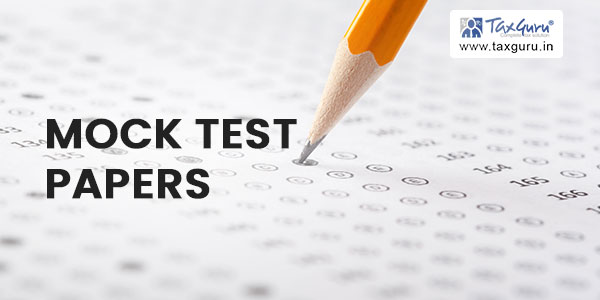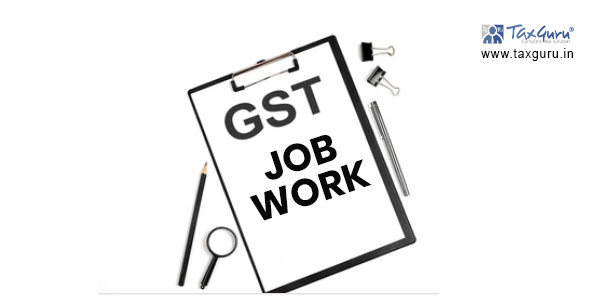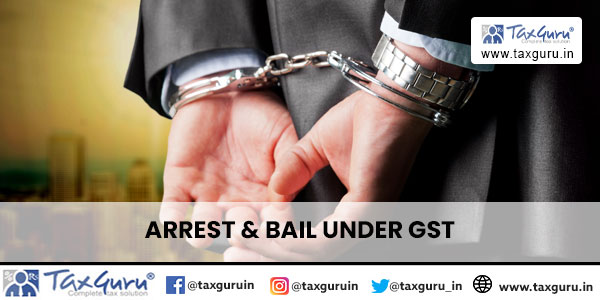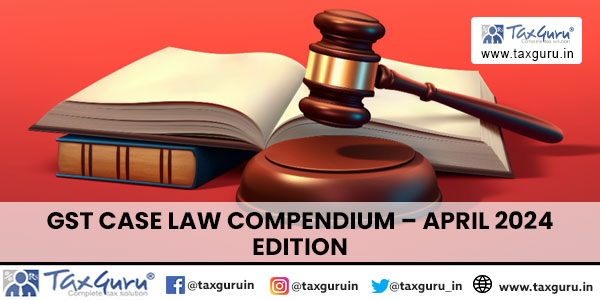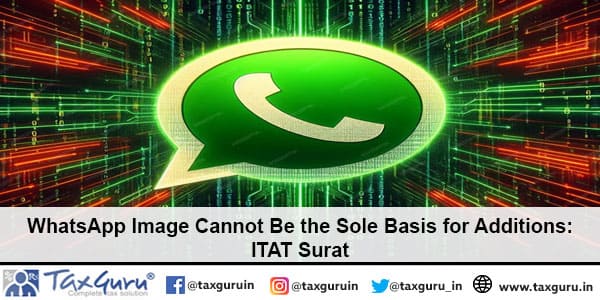Case Law Details
Shri Cherian Abraham Vs. DCIT (ITAT Bangalore)
The first objection raised by the assessee is regarding the validity of assessment framed under Section 143(3) r.w.s. 153C of the Income Tax Act, 1961 (in short ‘the Act’). The learned Authorized Representative of the assessee has submitted that the search was conducted on 6.2.2012 and in pursuant to the search the Assessing Officer issued a Notice under Section 153C for the Assessment Year 2012-13 which is not valid as this assessment year is the current year in which the search itself was carried out. Therefore, he has submitted that the assessment framed under Section 153C is not valid and liable to be quashed.
On the other hand, the ld. CIT DR has submitted that there is no dispute that the search was conducted in the previous year relevant to the assessment year under consideration therefore the provisions of Section 153C are not applicable for the assessment year under consideration however, the mention of this Section in the order is only a mistake which is covered under the provisions of Section 292BB of the Act.
Having considered the rival submissions as well as the relevant material on record, we find that undisputedly when the search was carried out on 6.3.2012 then the provisions of Section 153C are not applicable for the assessment year under consideration i.e. 2012-13 therefore, the assessment framed in question for the assessment year under consideration will be treated only under Section 143(3) and mere mention of section 153C in the assessment order will not render the assessment invalid or void ab-initio. It is apparent that this is a case of only a mistake of mentioning the assessment framed under Section 143(3) r.w.s 153C and no other material or procedural defect either pointed out or found on the record to suggest that the Assessing Officer has not followed the procedure for framing the assessment under Section 143(3). Hence, this ground raised by the assessee is devoid of any merit and accordingly we dismiss the Ground No. 1 of the additional ground.
Full Text of the ITAT Order is as follows:-
This appeal by the assessee is directed against the order date 22.07.2016 of Commissioner of Income Tax (Appeals) for the Assessment Year 2012-13.
2. The assessee has raised the following grounds :
1. CIT(A) erred in law and on the facts of the case (i) in upholding the action u/s.153C and (ii) in sustaining the addition of Rs. 11,79,60,000/-.
2. He failed to appreciate that the assessment is void as the Notice u/s.153C has been issued in respect of search u/s.132 in the case of one Mr. Prasanna Kumar and not Mr. Peter Caddy and that no incremental material has been found against the appellant in the said search.
3. He also failed to appreciate that no ‘satisfaction note’ has been recorded by the Assessing Officer of Prasanna Kumar and that a copy of the `satisfaction note’, if any, recorded by the said Officer has not been given to the appellant.
4. Without prejudice, the appellant submitted that CIT(A) failed to appreciate that no satisfaction report has been recorded even in respect of search in the case of Mr. Peter Caddy.
5. CIT(A) erred in relying on his own appellate order in the case of Mr. Peter Caddy without giving any opportunity to rebut the finding.
6. The appellant prays that he should be given a copy of the said appellate order.
7. He erred in stating that the police complaint dated 28.11.2011 filed by the appellant against Mr. Peter Caddy giving details of the claim of Rs. 11,79,60,000/-, was an after thought.
8. He overlooked that the police complaint was filed on 28.11.2011 much earlier than the Registered Notice dated 01.02.2012 given by the appellant to Mr. Peter Caddy.
9. Without prejudice to the above, the appellant submits as follows:
9.1. The principles of natural justice had been violated in completing the assessment relying on the statement of Mr. Peter Caddy, without giving any and unreasonable.
11. The appellant therefore prays that the assessment may be annulled and that the addition of Rs. 11,79,60,000/- be deleted.
3. The assessee has also raised additional grounds as under :
1 The Appellant submits that the assessment u/s.143(3) r.w.s.153C is invalid since no notice u/s.153C was issued.
2. The CIT(A) overlooked the fact that the return was filed on 26.09.2012 and that, therefore, notice dated 12.09.2013 u/s.142(1) was not valid in Law.
3. He also overlooked the fact that the assessment was not valid in Law since the notice dated 21.10.2013 u/s.143(2) was beyond the time limit laid down by Law.
4. The Appellant, therefore, prays that the assessment may please be quashed.
4. We have heard the learned Authorized Representative as well as learned Departmental Representative on admission of additional grounds. It is apparent from the additional grounds that the issues raised in the additional grounds are purely legal in nature and also do not require any new facts to be examined or investigated for disposal of the same. Accordingly, in view of the facts and circumstances of the case as well as by following the decisions of Hon’ble Supreme Court in the case of NTPC Ltd. Vs. CIT 229 ITR 383 (SC) we admit the additional grounds raised by the assessee for the adjudication on merits.
5. Since the issue raised in the additional grounds are legal in nature and go to the root of the matter therefore, we first take up the additional grounds raised by the assessee for adjudication.
6. The first objection raised by the assessee is regarding the validity of assessment framed under Section 143(3) r.w.s. 153C of the Income Tax Act, 1961 (in short ‘the Act’). The learned Authorized Representative of the assessee has submitted that the search was conducted on 6.2.2012 and in pursuant to the search the Assessing Officer issued a Notice under Section 153C for the Assessment Year 2012-13 which is not valid as this assessment year is the current year in which the search itself was carried out. Therefore, he has submitted that the assessment framed under Section 153C is not valid and liable to be quashed.
3. On the other hand, the ld. CIT DR has submitted that there is no dispute that the search was conducted in the previous year relevant to the assessment year under consideration therefore the provisions of Section 153C are not applicable for the assessment year under consideration however, the mention of this Section in the order is only a mistake which is covered under the provisions of Section 292BB of the Act.
4. Having considered the rival submissions as well as the relevant material on record, we find that undisputedly when the search was carried out on 6.3.2012 then the provisions of Section 153C are not applicable for the assessment year under consideration i.e. 2012-13 therefore, the assessment framed in question for the assessment year under consideration will be treated only under Section 143(3) and mere mention of section 153C in the assessment order will not render the assessment invalid or void ab-initio. It is apparent that this is a case of only a mistake of mentioning the assessment framed under Section 143(3) r.w.s 153C and no other material or procedural defect either pointed out or found on the record to suggest that the Assessing Officer has not followed the procedure for framing the assessment under Section 143(3). Hence, this ground raised by the assessee is devoid of any merit and accordingly we dismiss the Ground No. 1 of the additional ground.
5. Ground No. 2 is regarding the Notice issued under Section 142(1) is invalid.
6. We have heard the learned Authorized Representative as well as learned Departmental Representative and considered the relevant material on record. The learned Authorized Representative has contended that when the assessee has already filed the return of income on 26.9.2012 then the Notice issued by the Assessing Officer under Section 142(1) on 12.9.2013 is not valid.
7. On the other hand, the learned CIT DR has submitted that since this return of income was filed by the assessee in the electronic form and therefore the Assessing Officer has rightly issued Notice under Section 142(1). In response to that Notice the assessee intimated the Assessing Officer vide letter date 8.10.2013 that the assessee has already filed the return of income for the year under consideration and copy of which was enclosed to the said letter. Therefore there will be no adverse or prejudicial consequence of the Notice issued under Section 142(1) by the Assessing Officer.
8. Having considered the rival submissions as well as the relevant material on record, we are of the view that even if the assessee filed the return of income on 26.9.2012 and the Assessing Officer has subsequently issued a Notice under Section 142(1), the same will not effect the validity of the assessment in question framed under Section 143(3) of the Act. Accordingly, we do not find any merit or substance in additional ground No. 2 and the same is dismissed.
9. The additional ground No.3 is regarding the validity of assessment due to the reason that the Notice issued under Section 143(2) on 21.10.2013 is beyond the limitation provided under law and consequently the assessment framed on the basis of the said time barred Notice is not valid.
10. On the other hand, the learned CIT DR has submitted that the AO has acted upon the return of income only when the assessee filed its letter date 8.10.2013 wherein it was stated that the assessee has filed its return of income and copy was attached to the said letter. Therefore it was contended that the limitation for issue of Notice under Section 143(2) would reckon from 8.10.2013 and consequently the Notice issued by the Assessing Officer under Section 143(2) on 21.10.2013 is within the limitation.
11. We have considered the rival submissions as well as the relevant material on record. We find that the assessee filed its return of income by e- filing on 26.9.2012. This fact of e-filing of return has not been disputed by the Assessing Officer and it is also matter of record as a copy of the said return has been now filed by the Assessing Officer along with the record. There is no dispute that the return of income was filed by the assessee under Section 139 of the Act and it was not filed in response to the Notice under Section 142(1). The assessee only intimated the Assessing Officer vide its letter date 8.10.2013 that he has also filed its return of income and a copy of which was also filed before the Assessing Officer. The fact of filing the return of income by the assessee on 26.9.2012 is not in dispute and therefore, the limitation for issuing the Notice under Section 143(2) would expire by six months from 31.3.2013 which would be on 30.9.2013. For ready reference, we quote the provisions of Section 143(2) as under :
“143 (2) Where a return has been furnished under section 139, or in response to a notice under sub-section (1) of section 142, the Assessing Officer or the prescribed income-tax authority, as the case may be, if, considers it necessary or expedient to ensure that the assessee has not understated the income or has not computed excessive loss or has not under-paid the tax in any manner, shall serve on the assessee a notice requiring him, on a date to be specified therein, either to attend the office of the Assessing Officer or to produce, or cause to be produced before the Assessing Officer any evidence on which the assessee may rely in support of the return:
Provided that no notice under this sub-section shall be served on the assessee after the expiry of six months from the end of the financial year in which the return is furnished.”
Hence the Notice issued by the Assessing Officer on 21.10.2013 is beyond the period of limitation as provided under Section 143(2) and consequently the Assessing Officer cannot assume the jurisdiction to frame the assessment. Notice issued under Section 143(2) gives the jurisdiction to the Assessing Officer to proceed with the scrutiny and frame the assessment under Section 143(3) of the Act. Once the Notice issued under Section 143(2) is invalid being beyond the period of limitation the Assessing Officer shall have no jurisdiction to frame the assessment on the basis of invalid Notice issued under Section 143(2). Accordingly, the Notice issued under Section 143(2) is invalid being barred by limitation, the same would render the assessment framed as bad in law for want of jurisdiction of the Assessing Officer. Thus it is settled proposition of law that no assessment can be made if the Notice issued under section 143(2) is invalid being beyond the period of limitation prescribed under the said section. The Delhi Special Bench of this Tribunal in the case of Rajkumar chawla & Others Vs. ITO 94 ITD 1 while considering the identical issue has held in paras 26 to 42 as under :
“26. The purpose of serving the notice has been explained in Circular No. 545, date 31st Oct., 1989 as reported in (1990) 82 CTR (St) 1 : (1990) 182 ITR (St) 1 as under :
“A proviso to sub-s. (2) provides that a notice under the sub-section can be served on the assessee only during the financial year in which the return is furnished or within six months from the end of the month in which the return is furnished, whichever is later. This means that the Department must serve the said notice on the assessee within this period, if a case is picked up for scrutiny. It follows if an assessee, after furnishing the return of income does not receive a notice under s. 143(2) from the Department within the aforesaid period, he can take it that the return filed by him has become final and no scrutiny proceedings are to be started.”
27. From the reading of the proviso as it stands in the relevant year and the above circular, it is clear that AO has got no power to make a scrutiny assessment unless he issues a notice in the prescribed time of 12 months making his intentions clear to the assessee. Further, the only procedure of making assessment which the Act prescribes are under ss. 143(1), 143(3) and 144 (incidentally we may point out that provisions of Chapter XIV-B prescribing for a separate assessment of undisclosed income are no more applicable on searches initiated after 31st May, 2003), therefore, one has to follow the procedure laid down there. Here it is significant to quote the passage from the Full Bench decision of the . Kerala High Court in Lally Jacob vs. ITO (supra), which was quoted with approval by the apex Court in K. Govindan & Sons vs. CIT (supra) as under :
“A reading of ss. 147 and 148 makes it clear that, at any rate, an assessment for the first time made by resort to s. 147 is a regular assessment. Sec. 148 enjoins the ITO before making an assessment under s. 147 to serve a notice on the assessee containing all or any of the requirements which may be included in a notice under sub-s. (2) of s. 139. The further provision in that section is very significant which provides that the aforesaid notice has to be treated as if it is a notice under s. 139(2) and that all the provisions of the Act shall apply to the subsequent procedure and the final assessment. In other words, the notice issued under s. 148 has to be deemed to be a notice under s. 139(2) and, if the other provisions of the Act have to be applied, an assessment in pursuance of that can be made only under s. 143 or s. 144. We were not shown any other provision by which the ITO is authorized to make an order of assessment under the Act. The provisions contained in s. 140A also give an indication that an assessment made in pursuance of a notice under s. 148 is a regular assessment under s. 143 or s. 144, for s.
140A(2) provides that any admitted tax paid in pursuance of s. 140A(1) shall be deemed to have been paid towards the regular assessment under s. 143 or s. 144. It is pertinent to note that s. 140A(1) deals with a return required to be furnished under s. 139 or s. 148. That makes the provision clear that an assessment made under s. 147 also will be a regular assessment under s. 143 or s. 144. Accordingly, we hold that any assessment made for the first time by resort to s. 147 will also be a regular assessment for the purpose of invoking s. 217 of the Act. With great respect, we dissent from the view expressed in certain decisions referred to earlier in this judgment which take a contrary view.”
Essentially, therefore, there is no choice to apply part of the section and leave the other part when the effect has to be given to the scheme contained in the whole section i.e., s. 143(2) of the Act along with the proviso. Proviso, therefore, cannot be divorced from the main section. It has to be construed with reference to the preceding parts of the section to which it is appended and as subordinate to the main provisions of the Act. It has been said that there is no rule that an Act containing a proviso is to be construed as to its first or enacting part without reference to the proviso. The section must be construed as a whole, each portion throwing light on the rest.
Lord Wright in Lemings vs. Kalley (1940) AC 206 at p. 229 said :
“The proper course is to apply the broad general principle of construction, which is that a section or enactment must be construed as a whole, each portion throwing light if need be on the rest. I do not think there is any other rule even in the case of a proviso in the strictest and narrowest sense.”
28. The learned Departmental Representative Shri Rajnish Kumar emphasized that the provisions of sub-s. (2) of s. 143 and other provisions mentioned therein are to be applied to the extent possible/practicable and not in the literal sense. The proviso in s. 143(2), which is a part of jurisdictional aspect, would be inapplicable to assessment/reassessment to be made under s. 147 of the Act. Reference has been made to the decision of special Bench at Lucknow of the Tribunal in the case of Nawal Kishore & Sons Jewelers vs. Dy. CIT (supra), particularly, contending that the jurisdiction to assess or reassess is concerned by issue of notice under s.148 of the Act. We, however, are not inclined to agree with the learned Departmental Representative for the reasons given in subsequent paragraphs.
29. Sec. 148 confers jurisdiction merely to issue notice, calling for a return, in cases where income has escaped assessment, for making assessment or reassessment as provided under s. 147. This section however does not make the assessment or reassessment mandatory but leaves it to the discretion of the AO when r/w s. 147 of the Act. Sec. 147 has used the words “may” for making assessment or reassessment so as to give discretion to the AO. For brevity, s. 147 is reproduced as under :
“Section 147 : If the AO has reason to believe that any income chargeable to tax has escaped assessment for any assessment year, he may subject to the provisions of ss. 148 to 153, assess or reassess such income and also any other income chargeable to tax which has escaped assessment and which comes to his notice subsequently in the course of the proceedings under this section or recompute the loss or the depreciation allowance or any other allowance as the case may be, for the assessment year concerned (hereafter in this section and in ss. 148 to 153 referred to as the relevant assessment year) :”
30. Now it should be appreciated that there is vast difference between an assessment made under s. 148 and the assessment made under s. 158BC of the Act. They are as under :
1. Chapter XIV-B is a complete code for assessment of search cases. Reassessment under s. 148 falls under Chapter XIV which prescribes the procedure for making assessment and incorporates ss. 139, 142 143, 144, 147, 148 and 153, etc. Thus the two falls under different chapters.
2. Sub-s. (1) of s. 158BA clearly spells out that where search takes place, the AO shall proceed to determine the undisclosed income of the person in accordance with the procedure laid down in this chapter.
3. Explanation to sub-s. (2) of s. 158BA provides that assessment made under this chapter shall be in addition to the regular assessment.
4. The procedure of completing the block assessment has been laid down under s. 158BC.
5. 158BE provides the limitation of completing the block assessment.
6. 158BFA makes the provision of levying interest and penalty in block cases.
7. Sec. 113 provides the rate at which income determined under the block is to be taxed.
31. In contrast, s. 148 does not provide any methodology for computing the income on reassessment or assessment. On the contrary, it creates a legal fiction that such return shall be treated as one made under s. 139. By the creation of such legal fiction all the procedures prescribed in and subsequent to s. 139 automatically apply in toto. It is a settled principle that a legal fiction has to be taken to its logical conclusion and, therefore, what is valid for a return under s. 139 will be valid with equal force to a return filed under 148. Therefore, the proviso will apply to a return filed in response to notice under s. 148. It is pertinent to note that cl. (b) of s. 158BC specifically talks of the applicability of s. 142, sub-ss. (2) and (3) of s. 143. There is an omission of sub-s. (1) to s. 143. This chapter clearly prescribes its own return, form of own methodology for computation of income but falls back on the provisions of s. 142, 143, 144, etc. only for procedural aspect. If the proviso is made applicable, then a clash erupts between the provisions of Chapter XIV-B with s. 143(2) as the assessment is mandatory under this chapter. This would be clear by reading the provision of sub-s. (1) of s. 158BA, which states as under :
“the AO shall proceed to assess the undisclosed income in accordance with the provisions of this chapter”.
32. The word used in the above lines is “shall”, thus making assessment mandatory. If the notice is not issued in time then no assessment can be framed and a situation arises which this chapter does not envisage. Further, the purpose of proviso was only to make the assessee aware that his assessment is going to be taken or not under scrutiny. This is not required with this class of assessee as he is already aware that his assessment for the block period is going to be made.
Decision of Lucknow Bench of the Tribunal, therefore, cannot be made applicable to the provisions of Chapter XIV, which are different to the provisions of special provisions of assessment contained in Chapter XIV-B of the Act.
33. The learned Departmental Representative in his written submission has pointed out that there is a marked difference in the return filed pursuant to notice under s. 148 and a return under s. 139 or one required to be filed under s. 142(1). This difference was highlighted by pointing out that time-limit of filing return under both the provisions are different. The appeal provisions under s. 246 and limitation provision under s. 153 are
different. These are trite arguments and have already been considered in numerous judgments, some of which are as follows :
(a) Mrs. Rama Sinha (supra)
(b) R.B. Seth Shreeram Durga Prasad & Fateh Chand Nursing Das (Export Firm) vs. CIT (1987) 64 CTR (Bom) 44 : (1987) 168 ITR 619 (Bom)
(c) R. Dalmia & Ors (AOP) vs. CIT (supra)
(d) R. Dalmia & Anr. vs. CIT (supra)
(e) Lally Jacob vs. ITO (supra)
(f) K. Govindan & Sons vs. CIT (supra)
(g) CIT vs. Usha Agarwal (1990) 84 CTR (P&H) 97: (1989) 178 ITR 406 (P&H)
Suffice to say that answer to all these lay in the following passage of the apex Court as stated in R. Dalmia vs. CIT (supra), a judgment strongly relied by Shri Sampath, the counsel for the appellants.
“As to the argument based upon ss. 144A, 246 and 263, we do not doubt that assessments under s. 143 and assessments and reassessments under s. 147 are different, but in making assessments and reassessments under s. 147 the procedure laid down in sections subsequent to s. 139, including that laid down by s. 144B, has to be followed.”
34. Now we come to one of the main contentions of the Department that s. 148 uses the phrase ‘so far as may be’ and, therefore, the procedural set up in Chapter XIV will apply to the extent it is practical or possible. Consequently, the same is not applicable to the return filed in pursuance to notice under s. 148. To buttress their argument, they further relied on the cases Dr. Pratap Singh vs. Director of Enforcement (supra) and Ujagar Prints vs. Union of India (1989) 75 CTR (SC) 1 : (1989) 179 ITR 317 (SC) and CIT vs. Bansidhar Jalan & Sons (supra) and Vishwanath Prasad Bhagwati Prasad vs. CIT (supra) for the proposition that jurisdictional foundation is validly laid by issue of notice under s. 148 and cannot be taken away by a procedural section.
35. In Dr. Pratap Singh’s case the apex Court held that the said phrase would mean, “that those provisions may be generally followed to the extent possible”. Similarly, in Ujagar Prints the apex Court held that it would mean ‘to the extent necessary and practical’. Now saying so, would not mean that what is not followed is not necessary to be followed as the provisions were to be broadly followed and not in its entirety. We are afraid such type of construction would render the adoption of procedure as prescribed in ss. 139 to 143 and other provisions as meaningless. The phrase has been used so as to provide that the provision would be generally applicable but to the extent it is not inconsistent with the express provisions of the adopting legislation. Now the Special Bench Lucknow specifically pointed out the inconsistency with the provisions of Chapter XIV if the proviso is made applicable to the block assessment. No such inconsistency has been pointed out to us in this regard if the proviso is applied to s. 147. A feeble attempt was made by the learned Departmental Representative to highlight the so-called inconsistency in the provisions of s. 147 and proviso by citing an example that in case a notice under s. 148 is served in July, 2001, then assessment would be required to be completed by 31st March, 2003. However, assessee may choose to file return on 31st Jan., 2003. Then as per s. 153(2) assessment has to be completed by 31st March, 2003, whereas as per the proviso AO still has time to issue notice under s. 143(2) upto 31st Jan., 2004. We are afraid, this argument is erroneous on its face. The proviso is applicable to a valid return and not to an invalid return. Whenever a notice is issued under s. 148 calling for a return, a time-limit of filing return will be prescribed (normally a period of 30 days from the date of receipt of notice is allowed). AO will never issue a notice granting the assessee unlimited period to file the return. If he does so, he would be doing so at his own peril. If the return is not filed within that period, that would not amount to a return pursuant to notice under s. 148. Therefore a situation envisaged by the learned Departmental Representative would not arise. Although a situation is quite possible where the period available for filing the return and the period available to complete the assessment may overlap. But this overlapping is based on a misconception that proviso gives a vested right to the AO to wait till the last day of the 12th month to issue notice. In the given circumstances, notice could be issued earlier as the AO is supposed to act diligently and cannot be expected to act carelessly when the question of due share of tax of the State is concerned. It is pertinent to note that the proviso states the outer limit and not the minimum limit within which a notice could be issued if the other provision warrants, this period would get reduced. Supposing that a view is taken that proviso is not applicable and if notice under s. 148 was served on 30th March, 2002, in that case outer limit for completing assessment would be 31st March, 2003. In such a case, if the assessee does not file return till the fag end, would the AO not complete the assessment/ reassessment or was he helpless. The answer is simply no. He would proceed to complete the same by resorting to the provision of s. 144. Therefore, proviso nowhere comes in conflict with the provisions of s. 147. Had the proviso curtailed the limitation period as prescribed under s. 153(2), then certainly it will not apply. AO has to be more vigilant in making assessment pursuant to notice under s. 148. Therefore in almost all cases, he will issue notice to the assessee for completion of assessment before the expiry of 12 months from the date of filing a return in response to notice under s. 148 and no extra burden is cast upon him by following the proviso. We, therefore, do not subscribe to the view that it. is not practical to follow the proviso. Further, we may also point out that these words have been considered by the apex Court in R. Dalmia’s case as reported in 236 ITR (supra) in the context of s. 148 only and applicability of s. 144B to the assessment made under s. 147. There, the contention of the assessee was that the extended limitation as per Expln. IV to s. 153 would not apply to assessment made under s. 147 since the same is not an assessment under s. 143(3) and consequently the provision of s. 144B would not apply. The Court answered the contention as under :
“It was submitted on behalf of the assessee that the provisions of s. 144B were not applicable to assessments and reassessments under s. 147 because s. 144B stated that it applied only to “an assessment to be made under sub-s. (3) of s. 143.” The submission cannot be accepted because the words we have quoted from s. 148 cannot be ignored. A notice having been issued under s. 148, the procedure set out in the sections subsequent to s. 139 has to be followed “so far as may be”. Sec. 144B is a procedural provision. It fits into the procedural scheme as herein before noted and, therefore, it cannot be excluded by reason of the use of the words “so far as may be”. Nor is there any other good reason to exclude it from the procedure to be followed subsequent to notice under s. 148.”
On the same analogy the provisions of s. 143 cannot be ignored.
35.1. Finally, by placing reliance on the apex Court decision in Ujagar Prints vs. Union of India (supra), the learned Departmental Representative has argued that it being a referential legislation, only machinery provision of s. 143 will be applicable and nothing more. This argument of the learned Departmental Representative is misplaced. By reading the whole judgment, it will be clear that the said judgment does not advance the
case in their favour. Before adverting to the same, it is relevant to understand the background of the same. The aforesaid judgment pertains to the dispute under The Central Excises and Salt Act, 1944 (CE Act in short), and The Addl. Duties of Excise Act, 1957 (AD Act in short). The AD Act, 1957 did not prescribe any procedure for levy and collection of duty leviable under that Act, but provided that the procedure in the CE Act should be followed. The specific dispute was that it did not define the word ‘manufacture’, but by virtue of s. 2, it provided that for the purposes of the Act, definition of specified goods as contained in CE Act be adopted. Later, by an Amendment Act, 1980 the definition of ‘manufacture’ in CE Act was enlarged to include ‘processing’. The assessee contended that the enlarged definition of manufacture was not applicable for the purposes of AD Act as the charge of duty in the said Act is determined under s. 3 and is only quantified in s. 2. Therefore, only the procedural provisions of CE Act would be applicable and not the substantive provisions. In any case the definition as stood in CE Act 1957 would apply and any subsequent changes made thereto would be inapplicable.
36. It is in this background the apex Court discussed the nature of referential legislation and described it as under (pp. 360-361):
“Referential legislation is of two types. One is where an earlier Act or some of its provisions are incorporated, by reference, into a later Act. In this event, the provisions of the earlier Act or those so incorporated, as they stand in the earlier Act at the time of incorporation, will be read into the later Act Subsequent changes in the earlier Act or the incorporated provisions will have to be ignored because, for all practical purposes, the existing provisions of the earlier Act have been re-enacted by such reference into the later one, rendering irrelevant what happened to the earlier statute thereafter. Examples of this can be seen in Secretary of State vs. Hindustan Co-operative Insurance Society AIR 1931 PC 149, Bolani Ores Ltd. vs. State of Orissa AIR 1975 SC 17, Mahindra & Mahindra Ltd. vs. Union of India (1979) 49 Comp Cas 419 (SC); AIR 1979 SC 798. On the other hand, the later statute may not incorporate the earlier provisions. It may only make a reference of a broad nature as to the law on subject generally, as in Bajya vs. Smt. Gopikabai (1978) 3 SCR 561, or contain a general reference to the terms of an earlier statute which are to be made applicable. In this case, any modification, repeal or re-enactment of the earlier statute will also be carried into the later, for here, the idea is that certain provisions of an earlier statute which become applicable in certain circumstances are to be made use of for the purpose of the later Act also. Examples of this type of legislation are to be seen in Collector of Customs vs. Nathella Sampathu Chetty (1962) 3 SCR 786, New Central Jute Mills Co. Ltd. vs. Asstt. Collector (1971) 2 SCR 92 and Special Land Acquisition Officer, City Improvement Trust Board vs. P. Govindan (1977) 1 SCR 549. Whether a particular statute falls into the first or second category is always a question of construction. In the present, case, in my view, the legislation falls into the second category. Sec. 3(3) of the 1957 Act does not incorporate into the 1957 Act any specific provisions of the 1944 Act It only declares generally that the provisions of the 1944 Act shall apply “so far as may be”, that is, to the extent necessary and practical, for the purposes of the 1957 Act as well.”
Later on at p. 362, the Court held as under :
“There is no reason or logic why all the incidents attaching under the earlier legislations in so far as they are not clearly inconsistent with the later one, should not be extended to the later legislation as well.”
And concluded by saying as under :
“In the circumstances, I agree that we should give full and literal effect to the language of s. 3(3) and hold that it has the effect not only of attracting the procedural provisions of the 1944 Act but also all its other provisions including those containing the definition”
37. From the above passages we do not find any limitation put by the apex Court in the applicability of the referential legislation. Therefore we are of the view that full provisions of s. 143 including the proviso, would be applicable to assessment/ reassessment done under s. 147.
38. The learned Departmental Representative further stated that even if it is assumed that the proviso to s. 143(2) of the Act is applicable to returns filed pursuant to notice issued under s. 148, the failure to issue notice within the prescribed time of 12 months will not render the assessment as a nullity. Such a failure is to be treated as a procedural lapse which will be construed as mere irregularity and not illegality. This is so because the limitation provisions are directory and not mandatory. For this proposition reliance has been placed on the decisions rendered in the cases of –
(i) CIT vs. Shivanand Electronics (1994) 119 CTR (Bom) 94 : (1994) 209 ITR 63 (Bom)
(ii) Direction of Inspection vs. Puranmal & Sons 1974 CTR (SC) 243 : (1974) 96 ITR 390 (SC)
(iii) Topline Shoes Ltd. vs. Corpn. Bank (2002) 6SCC 33 (Paras 6 to 8 at 37-8).
39. It may be noted that no doubt, the foundation to assess or reassess is laid by issue of a valid notice under s. 148, but such jurisdiction is subject to further compliance as has been stipulated in the statute itself. If compliance of the proviso is not made, the very purpose of creating the proviso is defeated, i.e., uncertainty of assessee with respect to assessment shall continue. It is again a settled principle of interpretation that no construction of a statute should be made in a manner, which leaves a statute redundant. On the contrary, law requires a strict interpretation of the proviso. We may here clarify that provisions of limitation are to be strictly construed. An illuminating reference to this aspect can be found in the following observation of the Supreme Court in the case of K.M. Sharma vs. ITO (supra).
“A fiscal statute more particularly a provision such as the present one regulating period of limitation must receive strict construction. The law of limitation is intended to give certainty and finality to legal proceedings and to avoid exposure to risk of litigation to litigants for an indefinite period on future unforeseen events.”
If limitations are not followed strictly, chaotic situation would follow.
40. In the light of the analysis of the relevant provisions of law and judicial precedents, we are of the considered view that the return filed pursuant to notice under s. 148 of the Act must be assumed and treated to be a return filed under s. 139 of the Act and the assessment must thereafter be made under s. 143 or 144 of the Act after complying with all the mandatory provisions. Accordingly, it is incumbent upon the assessing authority to issue notice under s. 143(2) of the Act within the period as stipulated in the proviso there under. In this view of the matter, the first question before the Special Bench is answered in affirmative.
41. So far as the issue on question No. 2 is concerned, we hold that no assessment can be made if the notice under s. 143(2) of the Act is not served within the time prescribed by the proviso under s. 143(2) of the Act and thus the return filed will be deemed as accepted.
42. In the case of appellants S/Shri Raj Kumar Chawla, Rajiv Chawla and Ajay Chawla, notice under s. 148 was issued on 26th March, 1998. Shri Ajay Chawla filed the return of income on 28th April, 1998, but notice under s. 143(2) of the Act has been issued on 13th July, 1999 for 21st July, 1999. Shri Raj Kumar Chawla filed return on 15th May, 1998, but notice under s. 143(2) is stated to have been issued on 13th July, 1999 and served on him on 21st July, 1999. In the case of Shri Rajiv Chawla the return has been filed on 15th May, 1998 and the notice under s. 143(2) was issued on 13th July, 1999 for 21st July, 1999. Parties are not able to state the exact date of service of notice but the admitted fact is that the notice under s. 143(2) in respect of the three appellants have been served after the expiry of period of 12 months as provided under proviso to s. 143(2) of the Act. Since the assessing authority has failed to serve the notices within the statutory period provided under s. 143(2) of the Act, the AO had lost its jurisdiction to make assessment under s. 143(3) r/w s. 147 of the Act in the light of the decision reached by the Special Bench.”
Accordingly, in view of the facts and circumstances of the case where the Notice issued under Section 143(2) was beyond the period of limitation then consequent assessment is not valid and liable to be quashed. We order accordingly.
12. Since we have quashed the assessment being invalid therefore, we do not propose to go into the other grounds raised by the assessee.
13. In the result, the appeal of the assessee is allowed.
Order pronounced in the open court on 21st Nov., 2017.







